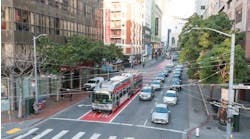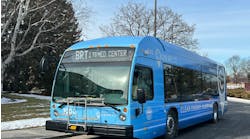The Chicago Transit Board today unanimously approved a balanced $1.38 billion budget that freezes fares and preserves service levels while continuing the agency’s unprecedented investment in projects and programs to improve service and modernize regional transit.
“The Chicago Transit Board supports this fiscally responsible budget that reflects the strategic operational and management reforms under CTA President Forrest Claypool’s leadership,” said Chicago Transit Board Chairman Terry Peterson. “The board is equally pleased that because the CTA continues to keep its financial house in order, it is able to continue to invest in modernization of the transit system while pursuing its mission of delivering quality, affordable transit for its riders.”
The budget reflects the ongoing positive impacts of operational efficiency reforms that have reduced unnecessary spending. The budget also includes 1,000 new customer-facing jobs the CTA was able to create in 2013 from efficiency measures put into place and the new collective bargaining agreement. Efficiency reforms have included modernizing supply chain operations to reduce excess inventory and lower materials expenses and lower worker absenteeism, which declined in 2012 and 2013 and is estimated to save the agency $10 million a year.
“Under the leadership of Mayor Rahm Emanuel, we have stabilized the agency’s finances and are operating more efficiently, while continuing to modernize our transit system,” said CTA President Forrest Claypool. “This budget continues to move us away from a history of deficits and ‘doomsday’ budgets that forced service reductions or tax increases in the past. We are building a modern CTA today that better serves customers and creates jobs.”
The Chicago Civic Federation on Tuesday gave its support to the proposed budget, noting the CTA’s significant efforts to stabilize its operating budget and manage costs.
The agency in 2014 will continue its ambitious $4 billion capital investment plan begun in 2011 as part of Mayor Emanuel’s Building a New Chicago program. Those plans include rehabilitating rail stations, modernizing rail and bus fleets, and bringing the agency’s massive infrastructure into a state of good repair to improve reliability and safety for customers.
The 2014 operating budget is the third consecutive CTA budget that preserves capital investment in the transit system without diverting capital funds to balance the operating budget, a past practice that stunted critical infrastructure projects. It is also balanced despite the challenges of state budget cuts and higher unfunded state mandates for health care, pension costs and providing free and discounted rides.
Mayor Emanuel’s CTA is continuing its historic level of investment in its bus and rail systems and follows the CTA’s successful delivery of a brand new Red Line South railroad on time and on budget in October 2013.
Major projects that will begin or continue in 2014 include projects that benefit customers and will boost local economic development in Chicago’s neighborhoods, such as:
• New 95th Street Terminal, a $240 million project that will expand and upgrade the 95th/Dan Ryan station, connecting Far South Side communities to job centers throughout the region and serving as a transit gateway for the South Side and suburbs
• $203 million reconstruction of the Wilson station into a modern, accessible transfer station for Red and Purple Lines
• New CTA station at Cermak/McCormick on the Green Line
• Ravenswood Connector project to upgrade track and related rail structure between the Chicago and Armitage stations on the elevated Brown and Purple Express lines
• Upgrading power substations on the Red, Blue and elevated trail lines to improve the reliability of traction power; eliminate the need for future repairs and reduce travel times
The CTA in 2014 will continue with its program to overhaul or replace its bus and rail fleets to provide more reliable and comfortable service to customers while reducing operational costs to the agency. This includes adding new Nova buses to our bus fleet in 2014. The CTA will also continue to take delivery of our newest generation of rail cars, the 5000 Series. These are the CTA’s first new rail cars in 20 years. The 5000 Series have been added to the Pink and Green Lines and are currently replacing older cars on the Red Line.
The agency anticipates receiving bids by the end of the year for the next generation of rail cars, the 7000 Series, to replace the CTA’s oldest cars and reduce the average age of CTA’s fleet to approximately 10 years by 2022 from a high of more than 25 years old in 2011.
The CTA places a high priority on technology investment to upgrade communications and safety and security systems. The CTA has used technology to maximize safety and security, including the installation more than 3,600 cameras across the entire rail system, more than 5,000 cameras on rail cars and as many as 10 cameras on each of our 1,800 buses. Working closely with the Chicago Police Department’s Public Transportation Unit, cameras have been a major tool in assisting in police arrests, combatting crime and create a more secure environment for our customers. The agency will also continue to add Train Tracker displays to the rail system and seek a vendor to upgrade wireless communications in its subway tunnels.
Total ridership on the CTA is expected to top 2011 levels and increase nearly 1 percent to 534.6 million in 2014.


